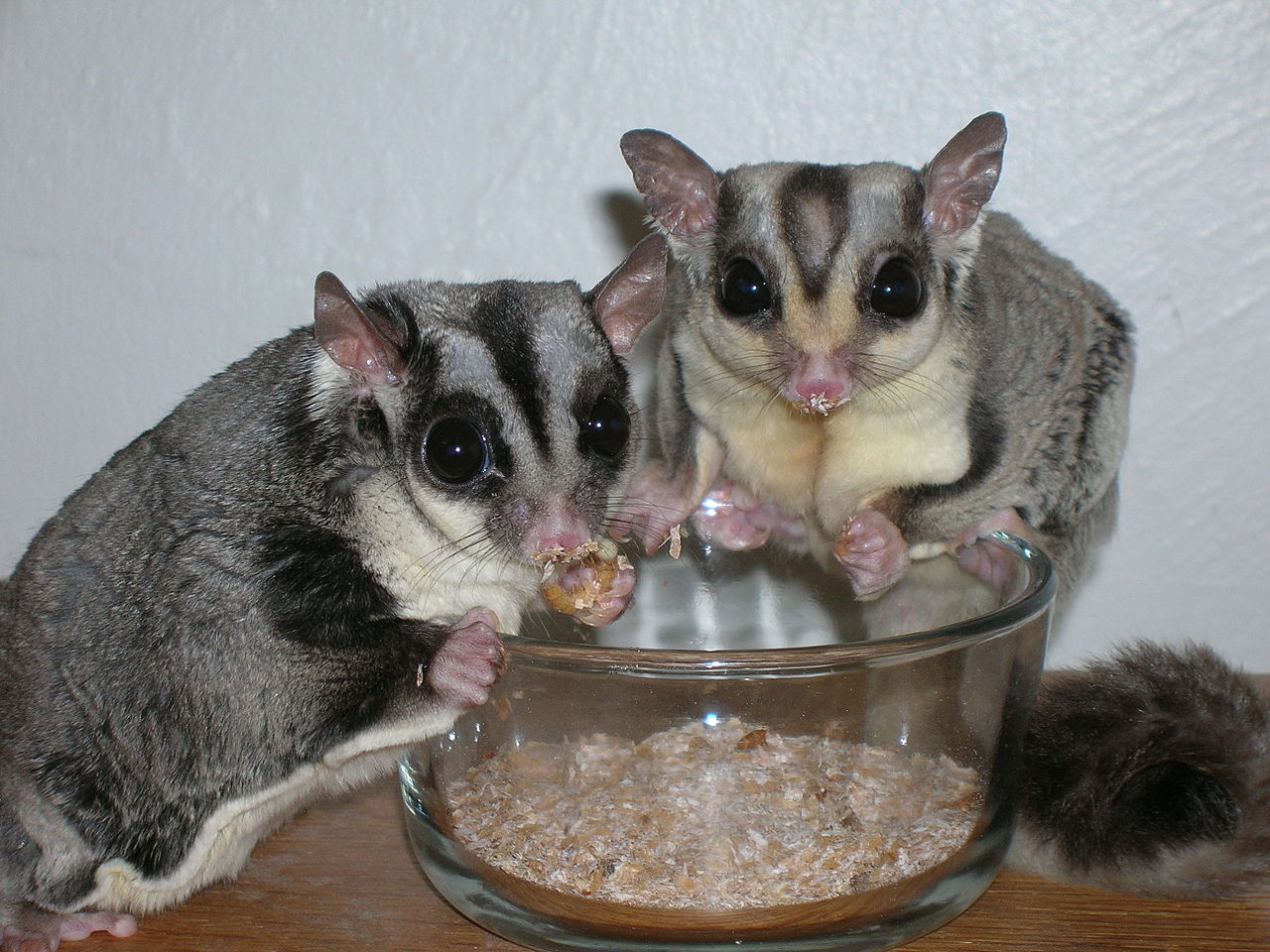Sugar gliders are a popular exotic pet because of their small size and cute appearance. Here are 5 key tips to caring for sugar gliders.

Sugar gliders are an increasingly popular pet in the USA, but they’re not legal in every state.
That’s because great care is required to look after them. Sugar gliders are adorable, but the maintenance involved in keeping them healthy and happy is not insubstantial.
Don’t let their size fool you. Sugar gliders need far more stimulation than a rodent, and they’re susceptible to many common problems.
If you’re adopting a sugar glider, you need to be prepared to give them a good life.
Fortunately, with these tips, it’s possible to give your baby a great life. It just requires some research and care.
1. Bonding With Sugar Gliders May Take Time
It may take your sugar glider some time to warm up to you. Many people find when they initially bring this tiny pet into their home that they don’t seem comfortable at first.
Don’t fear. This doesn’t mean they hate you, or that your relationship is doomed.
Sugar glider bonding takes time and patience.
Give them some time to adjust to their new home when they’re introduced to it and slowly let them get used to your presence. When they begin to seem comfortable, you can spend much more time with your sugar glider. You’ll notice a massive difference in their comfort level as time goes on.
Persistence and patience is the key.
2. Appropriate Housing for Your Pet Is a Must
Many people aren’t aware of the kind of housing a sugar glider needs. They’re small animals, so it’s easy to make the assumption that a hamster or mouse cage might be suitable.
It couldn’t be further from the truth!
They need as large a home as you can possibly give them, but 24 inches wide, by 24 inches deep, by 36 inches tall is the minimum size. If you have the space to give them something even bigger, then perfect.
It’s also important to make sure the bars are close together, as there’s no escape artist more exceptional than a sugar glider.
It’s also an idea to glider-proof the room that they live in. That way, if those sneaky little marsupials do manage to break free from their cage, they’re stuck in the room and you have a better chance of catching them.
The most important thing, though, is to make sure their home is large and they have plenty of stimulation in it.
3. Be Aware That They’re Susceptible to Stress
When keeping sugar gliders as pets, the most important thing to know is that they’re highly susceptible to stress.
For this reason, it’s important to own two of them together. They’re social animals who will bond with another sugar glider fast. Owning one sugar glider is rarely enough to keep your animal happy, and a sick sugar glider will stop eating and taking care of itself alarmingly fast.
Getting males fixed can also help with sexual frustration.
Make sure you’re cleaning out their cage regularly too. When they’re in an environment that doesn’t feel hygienic to them, sugar gliders can even go as far as self-mutilation.
They tend to be very emotional animals, so prepare yourself!
4. Find a Vet Who Is Comfortable and Qualified to Treat Sugar Gliders
Not all veterinarians are qualified in sugar glider care. Some are qualified in a technical sense but don’t feel comfortable taking sugar gliders as patients.
It’s very important to do your research and pick a veterinarian who has handled sugar gliders in the past and is comfortable taking on yours.
It can be tempting to pick the vet who’s closest to you, or the one with the cheapest treatments, but this is such a specialist animal that any old vet might not do.
If your sugar glider gets sick or stressed, it’s important you have someone to go to who has handled them in the past.
They may be adorable, but they can be tricky creatures, and it’s best to have all the expert help with them that you can get.
5. Sugar Gliders Are Omnivores and Need a Varied Diet
A natural sugar glider diet can be difficult to replicate when you own one as a pet. In the wild, they’ll snack on small prey and also enjoy plant-based sustenance such as nectar.
They can be picky eaters, but caring for sugar gliders properly means ensuring they’re getting all they need.
Your sugar glider should have a mixed diet of fruits, vegetables, and protein. On occasion, dry cat or dog food can even be used as protein, though this should not be given to them often.
Never be tempted to give your sugar glider tasty human snacks such as candy or sugar. Like other animals, this can be very damaging to your pet.
Enjoy Your Sugar Glider and Be Patient for Amazing Results
Sugar gliders can be difficult to take care of, but luckily the exotic pet community is rife with sugar glider information. You just have to search it out.
Although the amount of care a sugar glider needs to thrive can seem intimidating, it’s very rewarding to give these animals a happy, healthy life.
The truth is that they aren’t particularly independent animals, and they do need more stimulation than the average person realizes when beginning to look into ownership.
Sugar gliders are adorable, and you’ll love your friend if you have the patience to bond with them and take care of them. It’s important to take it slow, do your research, and ensure your baby is not just surviving but thriving!
For more pet tips and advice, check out the rest of our blog.































